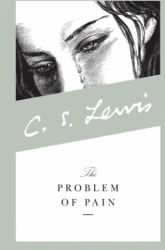A Brief Book Summary from Books At a Glance
About the Author
C. S. Lewis was one of the most influential writers of Christian literature in the 20th Century. His works sell more copies today than ever before. Lewis’ writings range from technical academic works (his works on medieval English literature are still considered magisterial), to popular apologetics, to children’s literature, and more.
Introduction
The Problem of Pain was Lewis’ first foray into the field of popular apologetics. Lewis examines the perennial problem of suffering in the world. He looks at both human suffering and animal suffering. He also discusses the nature of Heaven and Hell. He argues that Christian theology makes sense of suffering in this world and that the reality of Hell is compatible with the existence of an omnipotent and perfectly good God. Lewis takes the time to define key terms, and he considers the nature of omnipotence and pain. Many of the lines of argumentation that Lewis uses in this book have been widely used by contemporary apologists.
Table of Contents
Preface
Chapter 1 Introductory
Chapter 2 Divine Omnipotence
Chapter 3 Divine Goodness
Chapter 4 Human Wickedness
Chapter 5 The Fall of Man
Chapter 6 Human Pain
Chapter 7 Human Pain, Continued
Chapter 8 Hell
Chapter 9 Animal Pain
Chapter 10 Heaven
Appendix
Summary
Chapter 1
Introductory
When I was an atheist, the nature of the universe seemed to provide strong evidence against the existence of an omnipotent, good deity. The universe is vast but barely inhabited. The small pocket of life that we are familiar with exists in pain—both receiving and inflicting it. Conscious beings experience both pain and suffering. Yet in this world of pain, people began to ascribe the existence of the universe to a good, wise, and powerful Creator. Why would they do that, if the world is so bad?
Religion arises from several factors. First, there is the sense of the numinous. The sense of the numinous goes beyond natural fear. We can be afraid of tigers and pain, but the numinous is dreadful—it produces a sense of awe that goes far beyond a fear of natural danger. This sense is widespread through the human race, it has persisted through history, and contemporary technology and science is not eradicating it. A numinous experience cannot be understood by simply describing the physical environment in which it takes place. When a person has a sense of the numinous, they are either experiencing a glitch in their mind that has no purpose, or they are experiencing the presence of the supernatural—they are receiving revelation.
The second factor is our knowledge of the moral law. Just like the numinous, our sense of morality cannot be explained by describing physical events. It is impossible to get moral claims—what we ought and ought not to do—merely by describing the environment. Not only do people have this sense of morality, they also feel guilt for violating the moral law. This means that the moral code that people feel bound to obey is one that they feel they have broken. Like our numinous experiences, our experience of the moral law is either an illusion or a revelation. When the Numinous Power is identified with the moral lawgiver, the third stage in religious development has been reached. This was done by the Jews, who identified the awesome God they feared with the lawgiver, the righteous Lord. This was either a mistake, or revelation. In history, from among the Jews there arose a man who claimed to be at one with this God. It was claimed that his life, death, and resurrection has put us right with the majestic and righteous Lord.
When we look at the universe and the course of history, it does not look like it conforms to the moral code that we recognize. In fact, it seems like the actual events in the universe represent the opposite of the moral code. Christianity is not a philosophical system that was derived from natural theology, but its existence is a fact of history that interprets other facts, and which itself must be explained. When we accept the Christian view of the universe, then we generate the problem of pain.
Chapter 2
Divine Omnipotence
In its simplest form, the problem of evil arises because creatures are unhappy and God is supposed to be both good and almighty. On a popular level, omnipotence is usually understood as God’s ability to do absolutely anything. Some things, however,
[To continue reading this summary, please see below....]The remainder of this article is premium content. Become a member to continue reading.
Already have an account? Sign In
